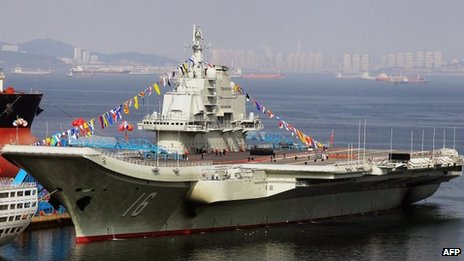
The Asia-pacific region will comprise a quarter of global naval security spending in the next couple of decades, spending nearly $200 billion USD as tension drives nations to upgrade their maritime defense capabilities.
Increased aggression from China and other border-disputes drives the production of 255 patrol craft, 235 fast attack craft, 128 amphibious ships, 116 submarines, 115 frigates, 82 offshore patrol vehicles, 42 destroyers, 34 mine ships and 21 auxiliary ships– that’s quite a shopping list.
China leads the way with 172 of these vessels, with South Korea and Japan following at 145 and 74 respectively. This information comes from Bob Nugent, a top-official at AMI International, a naval analysis firm in Bremerton, Washington.
The smaller nations, who can only produce smaller, lower-end vessels, will produce offshore patrol vessels (OPVs). These nations, mainly members of the Association of Southeast Asian Nations (ASEAN), are primarily concerned with patrolling their many islands or complicated coast-lines to prevent piracy and illegal fishing, in addition to defending themselves from the aggression of larger nations.
While in the northeastern part of the region, international giants such as China, South Korea and Japan are bolstering their large ships as bilateral tensions mount between all three countries.
On the surface, it may seem like China is the main reason behind this mini-arms race, as it has aggressively expanded its military production and initiated several maritime border disputes with nations in the region.
However, South Korea and Japan, in addition to seeing threats in North Korea and Russia, are also interested in long-term power projection. The region is dominated by ocean, and also potentially huge reserves of oil. As times are good enough for a boost in production now, these countries hope that down to road, if resources get scarce, they will have the force to secure more energy reserves.
Japan’s main immediate concern is defending their access to vital waterways surrounding its archipelago. In particular, the Nansei islands — a set of volcanic islands extending south from the Japanese mainland almost to Taiwan — are integral to Japan’s maritime border security. The country fears that increased aggression from China will put the islands at risk.
But besides shifting focus to their southwestern borders, Japan also needs to counter China’s new approach in force production. China is producing a new more stealthy class of submarine, causing Japan to respond by producing a new class of destroyers.
The 5,000 ton DD class destroyers which Japan will begin producing this year have improved submarine detection capabilities. Additionally, Japan is moving the extend the life of 14 destroyers of varying classes, which will increase their intelligence, surveillance and reconnaissance (ISR) capabilities.
Japan will also be upping their own submarine count, spending 53 billion yen to build a new SS-class submarine, while also investing to extend the life of submarines already in service. This will raise the number of active submarines from 16 to 22 in the coming decades.
In the south east, most members of ASEAN are expanding their naval power in different ways, for different reasons. Many of them are involved in maritime border disputes; the Philippines, Vietnam, Malaysia and Brunei. The Philippines and Vietnam have been recent victims of China’s new maritime policies: China has allowed patrol boats to respond aggressively to what it sees as violations of the territory of the South China Sea, which the Philippines in particular has a strong claim to.
The Philippines had increased production of helicopters to bolster their weak air force, and has also invested in OPVs to enforce their own version of their borders. Vietnam has followed suit, but has focused on outfitting their platforms with anti-ship missiles. It is also in the process of implementing six Russian-built Kilo-class submarines that should be delivered in 2014.